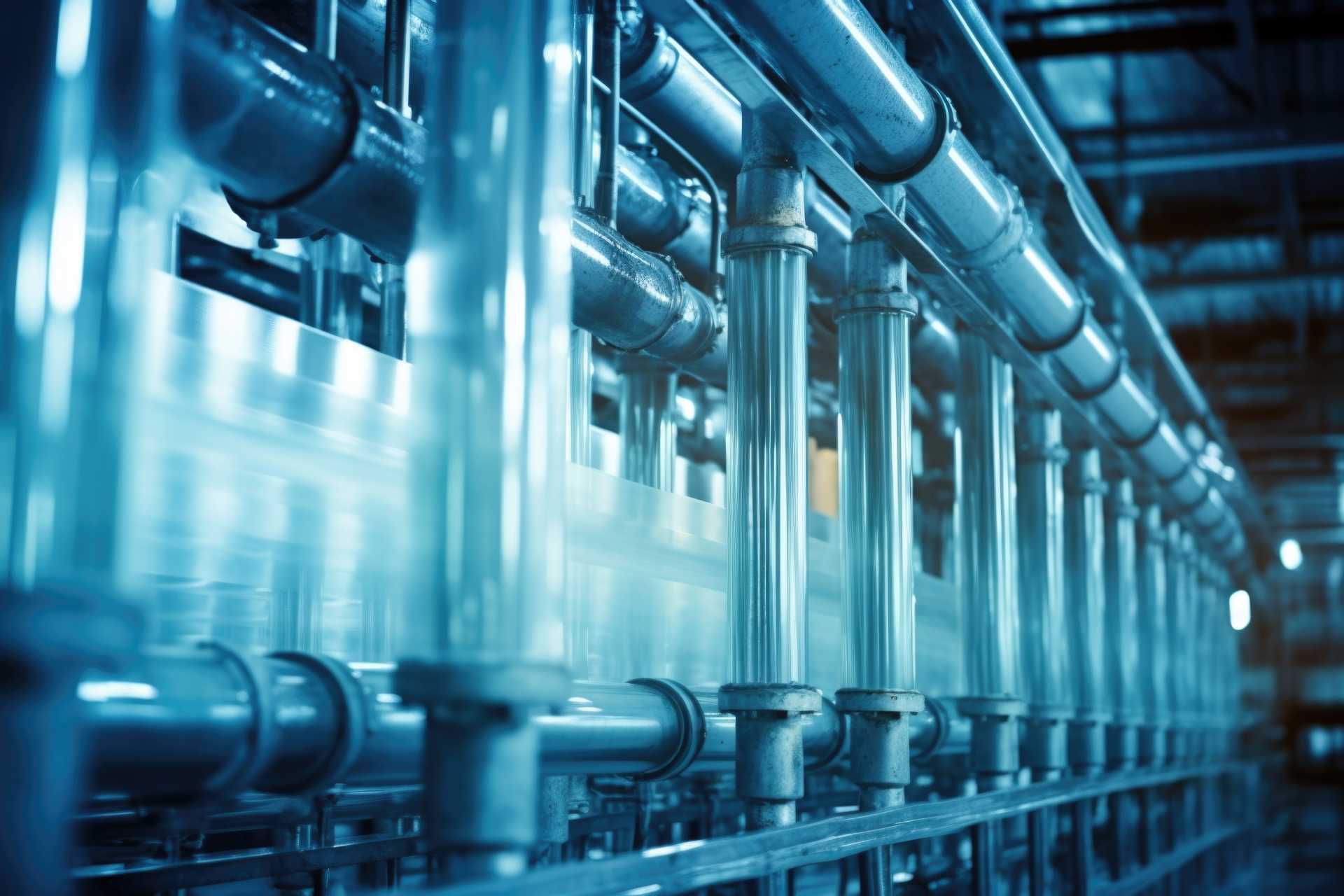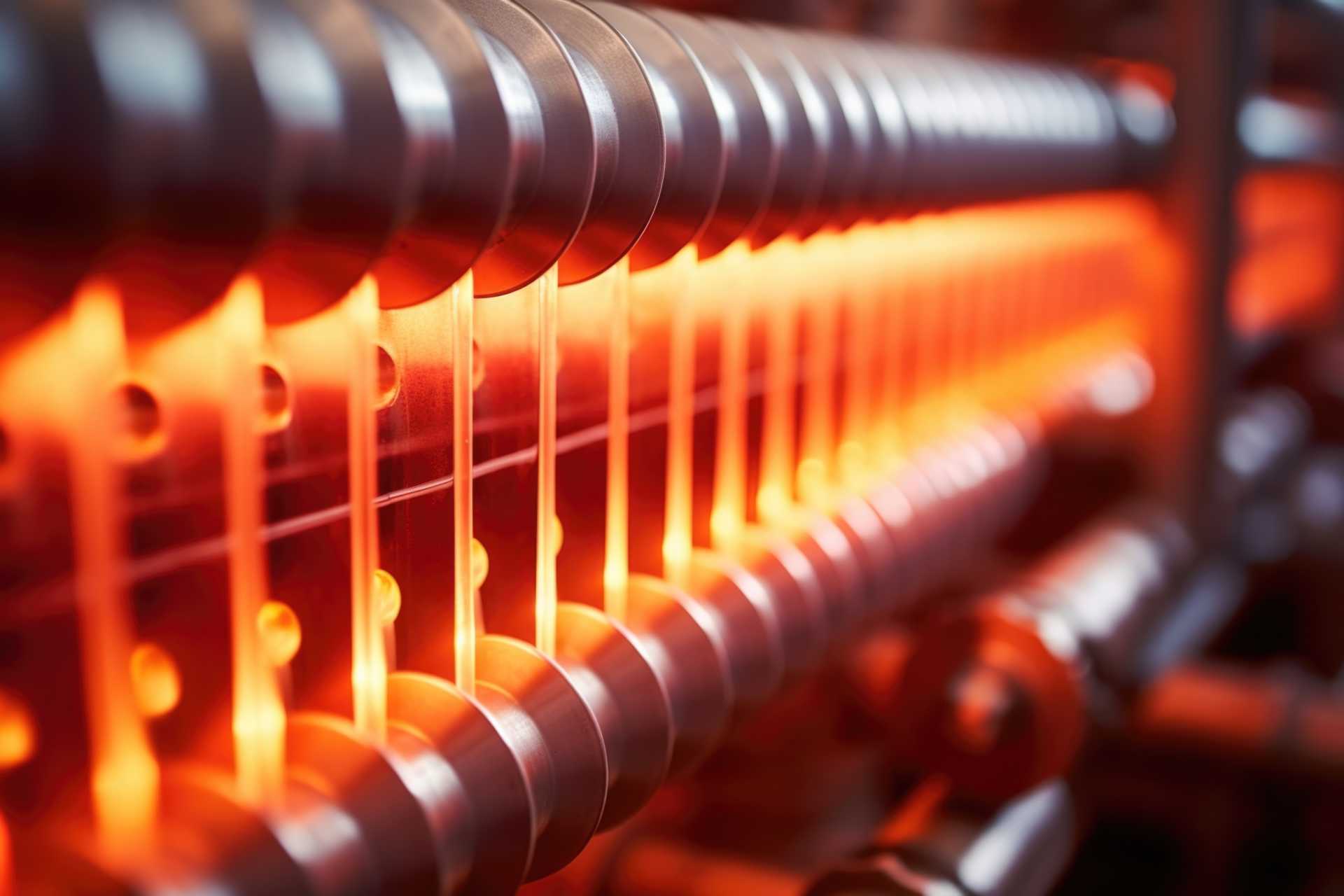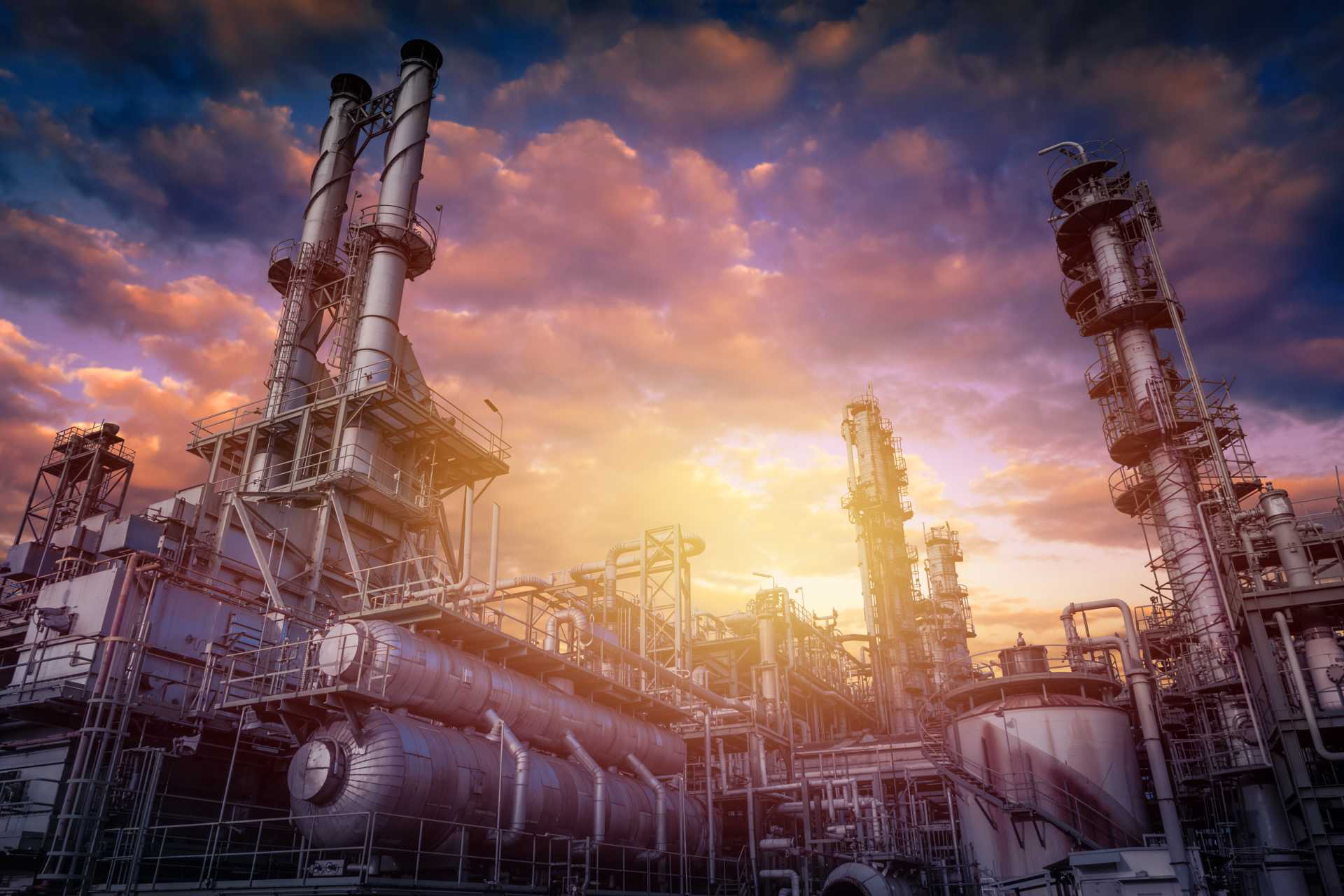Introduction

 Steam is used throughout the world as a means of producing energy. Steam is converted back to water in condensers and further cooling in Heat Exchangers. Heat exchangers are widely used in space heating, refrigeration, air conditioning, power plants, chemical plants, petrochemical plants, petroleum refineries, and natural gas processing. Heat exchangers are devices that provide the flow of thermal energy between two or more fluids at different temperatures. Heat exchangers are used in a wide variety of applications. These include power production; process, chemical and food industries; electronics; environmental engineering; waste heat recovery; manufacturing industry; and air-conditioning, refrigeration, and space applications.
Steam is used throughout the world as a means of producing energy. Steam is converted back to water in condensers and further cooling in Heat Exchangers. Heat exchangers are widely used in space heating, refrigeration, air conditioning, power plants, chemical plants, petrochemical plants, petroleum refineries, and natural gas processing. Heat exchangers are devices that provide the flow of thermal energy between two or more fluids at different temperatures. Heat exchangers are used in a wide variety of applications. These include power production; process, chemical and food industries; electronics; environmental engineering; waste heat recovery; manufacturing industry; and air-conditioning, refrigeration, and space applications.
The heat exchanger may be classified according to the following main criteria: Recuperators/ regenerators; transfer processes: direct contact and indirect contact; the geometry of construction: tubes, plates, and extended surfaces; heat transfer mechanisms: single-phase and two-phase; flow arrangements: parallel-, counter-, and crossflows. One common example of a heat exchanger is the radiator in a car, in which a hot engine-cooling fluid, like antifreeze, transfers heat to air flowing through the radiator.
Since steam is used to produce energy, corrosion of the heat exchanger is a constant maintenance problem. The use of corrosion-resistant metals and improved methods of water treatment have minimized the effect of corrosion on the steam side of the heat exchanger, but corrosions on the process side remains a serious problem.
Exchanger Leakage
 Corrosion on the process side causes the heat exchanger tubing to mechanically fail, allowing the process fluid to leak into the condensate return line. This can cause serious damage to the boiler. Therefore, it is necessary to monitor the condensate downstream of the heat exchanger and to dump the condensate as soon as it shows signs of contamination.
Corrosion on the process side causes the heat exchanger tubing to mechanically fail, allowing the process fluid to leak into the condensate return line. This can cause serious damage to the boiler. Therefore, it is necessary to monitor the condensate downstream of the heat exchanger and to dump the condensate as soon as it shows signs of contamination.
An excellent indication of contamination can be obtained by measuring the conductivity of the condensate, because pure condensate has a very low conductivity value, 1 to 10 µS, while contaminates (typically salts, acids or alkalis) that are introduced when leakage occurs have a significantly higher conductivity value. Because of the sizeable differences in values, even the slightest leak will sharply increase the conductivity reading. Any marked increase in the conductivity of the condensate indicates that leakage is present, and the condensate should be sent to drain.

For best results in leak detection, you need to measure a couple of things: sample conductivity range, contaminant conductivity, and how fast the sample conductivity can change relative to the time thru the leak source. As shown in the simplified diagram below, the conductivity instrument can be utilized to directly control the dumping of contaminated condensate. A single point conductivity analyzer (SC450G) can be located downstream of the heat exchanger, and utilize a high alarm relay to trigger the value. Another option is to use a dual input conductivity analyzer (DC402G) with one sensor upstream of the heat exchanger and one downstream. The built-in deviation calculation of the analyzer can be used to alarm, or activate a valve when the downstream conductivity deviates significantly from the upstream conductivity, This method compensates for a variance in the condensate conductivity.
Summary
Measurement and control of heat exchanger leakage can help prevent costly maintenance, repair and downtime. The simple, essentially maintenance-free measurement of condensate conductivity will give the operator necessary information (or provide automatic control) to prevent severe damage to the boiler should a breakthrough of the heat exchanger occur.
Product Recommendations
Conductivity Measurement System:
 Process Liquid Analyzer:
Process Liquid Analyzer:
2-wire FLXA202 Contacting Conductivity Analyzer
4-wire FLXA402 Contacting Conductivity Analyzer
Sensor Selection:
Analog and Digital SMART sensors are available. Analog options allow users to interface with a system that has been used historically. SENCOM™ technology, which allows sensors to transmit and receive data when connected to a transmitter/analyzer or any PC. The SMART digital sensors maintain specific measurement and calibration data on an integrated chip along that is an integral part of the sensor providing easy plug and play solutions. Data management software to optimize the performance of sensors for enhanced reliability and process safety.
 Option #1:
Option #1:
SC42-S*34 Large-bore conductivity sensor (fittings available for flow-thru, Insertion, or immersion installations)
 Option #2:
Option #2:
SC4A Conductivity sensor (fittings available for insertion, sanitary, or retractable installations.)
 Digital SMART Option:
Digital SMART Option:
The re-usable smart adapter, SA11, offers full measuring parameter functionality of analog sensors equipped with a Variopin connector and Yokogawa ID chip. The SA11 automatically recognizes the installed sensor and prepares the right configuration.
Industrias Relacionadas
-
Petróleo y gas
Yokogawa posee un caudal de experiencia en cada parte del negocio del petróleo y el gas, desde instalaciones en altamar y terrestres hasta ductos, terminales y operaciones en aguas profundas. Proveemos soluciones que mejoran la seguridad, garantizan una operación precisa y confiable y aumentan la eficiencia de la planta.
-
Química
Las plantas químicas dependen de procesos de producción continua y por lotes, cada una de los cuales impone diferentes exigencias para un sistema de control. Un proceso continuo exige un sistema de control robusto y estable que no falle y provoque el cierre de una línea de producción, mientras que en un proceso por lotes el énfasis se centra en tener un sistema de control que permita una gran flexibilidad para realizar ajustes a fórmulas, procedimientos y otros elementos. Ambos tipos de sistemas necesitan ser administrados en el historial de calidad del producto disponible, así como tener la capacidad de ejecutar operaciones no rutinarias. Con el respaldo de su extenso portafolio de productos, un equipo de experimentados ingenieros en sistemas y una red global de ventas y servicio, Yokogawa ofrece una solución para cada proceso productivo.
-
Papel y pulpa
La industria del papel y la pulpa es altamente competitiva y debe satisfacer necesidades del mercado que están en constante cambio. Yokogawa ayuda a poner en operación plantas eficientes en el consumo de energía que son sostenibles globalmente.
-
Alimentos y bebidas
La industria de alimentos y bebidas debe producir alimentos y bebidas seguros y de alta calidad para los consumidores. Además del control de calidad, los procesos de manufactura incluyen muchos retos, como gestionar ingredientes, mejorar la eficiencia y atender cuestiones ambientales globales. Yokogawa aprovecha sus décadas de especialización tecnológica para ayudar a los clientes a construir y operar la fábrica ideal.
-
Refinación
En el siempre cambiante mercado, las refinerías no solo son vistas como unidades de procesamiento de crudo, sino también como centros de beneficios. Al mismo tiempo, hay una clara conciencia de la necesidad de la seguridad en este tipo de instalaciones. Una solución de la producción total que abarca la planificación, programación, administración y control es necesaria para lograr los objetivos a largo plazo para la rentabilidad, la eficiencia y la protección del medio ambiente. Con años de experiencia en el campo de la automatización, Yokogawa puede traer soluciones totales accesibles para mejorar la operatividad y un mundo más limpio.
-
Productos a base de químicos
Yokogawa ha estado sirviendo al mercado de productos químicos a granel globalmente y ha obtenido reconocimiento como líder en este mercado. Con productos, soluciones y especialización en la industria, Yokogawa entiende su mercado y las necesidades de producción y trabajará con usted para proporcionarle una solución confiable y rentable durante el ciclo de vida de su planta.
Productos y Soluciones Relacionadas
-
2-Wire 24VDC Contacting Transmitter / Analyzer SC202
Designed for 2-wire (loop powered) system configuration. Standard mA (4-20), HART, Profibus, and Foundation Fieldbus communication available.
-
2-Wire Transmitter/Analyzer FLXA21
The FLEXA™ series analyzers are used for continuous on-line measurements in industrial installations. With an option for single or dual sensor measurement, they are the most flexible two-wire analyzer available.
-
Conductivity Analyzers
Maintain and control even the most demanding process applications
-
Conductivity Sensors
Measure aqueous solutions quickly and reliably
-
Digital SMART SENCOM™ Adapter, SA11
Reusable SMART adapter, requiring only the analog sensor to be disposed of when it reaches the end of its lifetime. With the SENCOM 4.0 platform, Yokogawa delivers reduced costs and waste while contributing to its long-term business goals of a sustainable future for all.
-
Multi Channel 4-Wire Analyzer FLXA402
Available in single or multi-sensor measurement
-
SENCOM™ SMART Digital Sensors
Reduce configuration time and simplify maintenance
¿Tiene Dudas?
Contacte a un Experto de Yokogawa y conozca como podemos ayudarle a resolver sus retos.